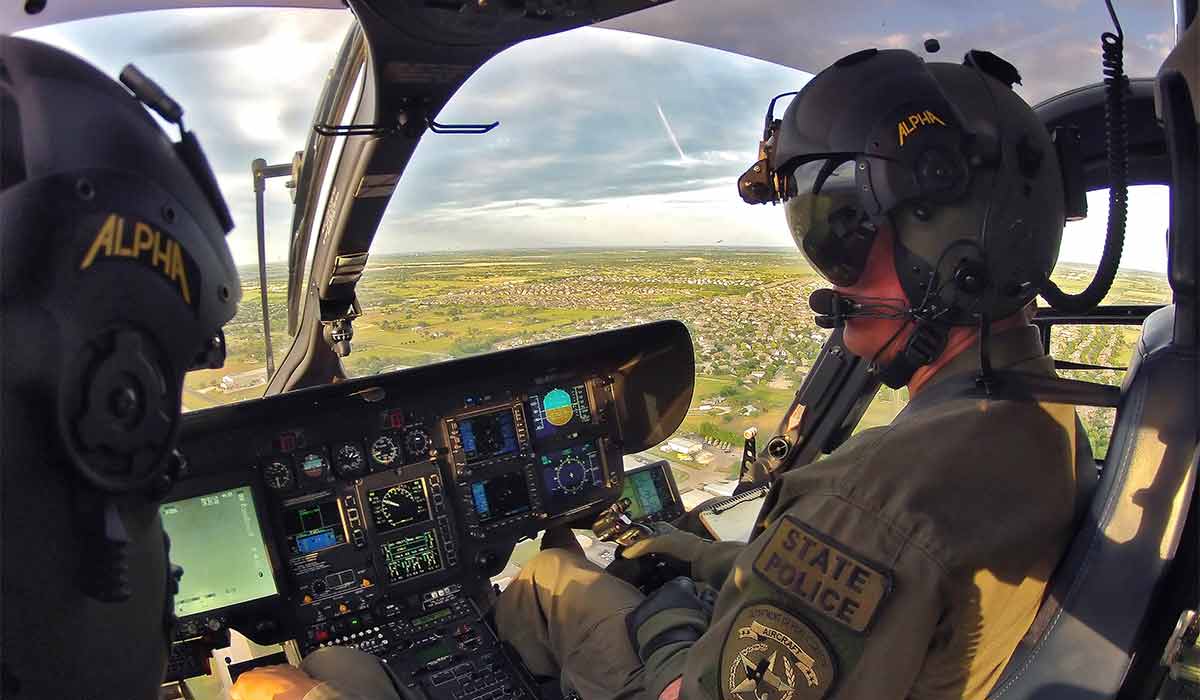
ALE operations can range from routine patrols to rescues and emergency medical evacuations. ALEA
Airborne law enforcement (ALE) officers work within police and other agencies’ aviation units, using aircraft to conduct and assist operations, ranging from routine patrols to search-and-rescue (SAR). The Department of Justice estimates about 350 of the 18,000 law enforcement agencies in the U.S. use airborne assets daily, but many don’t disclose aircraft and personnel numbers for security reasons. Daniel Schwarzbach, a senior officer and helicopter pilot with the Houston Police Department, and executive director/CEO of the Airborne Law Enforcement Association (ALEA), explains the path to these exciting careers.
What do ALE officers and units do?
ALE missions include patrols, ground-unit support, tactical-team insertions, EMS, prisoner transport, SAR and even firefighting — many units have Bambi Buckets for water drops. Units operate rotor (from piston Robinson R44s to twin turbines) and/or fixed-wing platforms (light sport aircraft and up). Police ALE crews commonly consist of a pilot, and a Tactical Flight Officer (TFO) who operates all equipment not related to flight: police radios, video cameras and FLIR systems, for example. As Schwarzbach notes, an aircraft doesn’t become an ALE asset “until the tactical flight officer turns on all the equipment.”
What are the requirements for becoming an ALE officer?
Most departments require ALE crew members be sworn police officers, and many mandate a minimum amount of prior ground patrol time; three to five years is common. Community and four-year colleges, and privately run police academies offer law enforcement programs that provide certification within a state, opening the door to employment. “Any aviation experience helps when being selected,” says Schwarzbach. Outside the U.S., ALE pilots are usually civilian employees.
What are the flight qualification requirements?
ALE units operate under public-use rules, exempt from most FAA aircraft and pilot regulations, but the majority adheres to accreditation standards developed under ALEA auspices, which require pilots have at least a commercial license for the category of aircraft they operate. Some units require ALE candidates to have at least a private pilot’s certificate; others will “take a police officers from the street, train them as tactical flight officers first, and then put them into pilot training,” says Schwarzbach. Such training programs typically require a three- to five-year service commitment from those accepted.
What career considerations should be kept in mind?
ALE salaries are based on the officer’s police rank, typically augmented with incentive pay or other bonuses (a one-rank-higher salary, for example). Many ALE officers are reluctant to accept a promotion as “there’s a good chance they will have to leave the aviation unit,” Schwarzbach says. Meanwhile, more agencies are adding unmanned aerial systems (UAS), or drones, to their enforcement tools. LEA drones are operated under the FAA’s new Part 107 rules, requiring pilots operating the aircraft commercially to have at least a private pilot’s certificate, and Schwarzbach says these positions “will continue to stay in the aviation realm,” rather than be operated by line patrol officers.
Learn more about airborne law enforcement careers here: alea.org.

Sign-up for newsletters & special offers!
Get the latest FLYING stories & special offers delivered directly to your inbox






